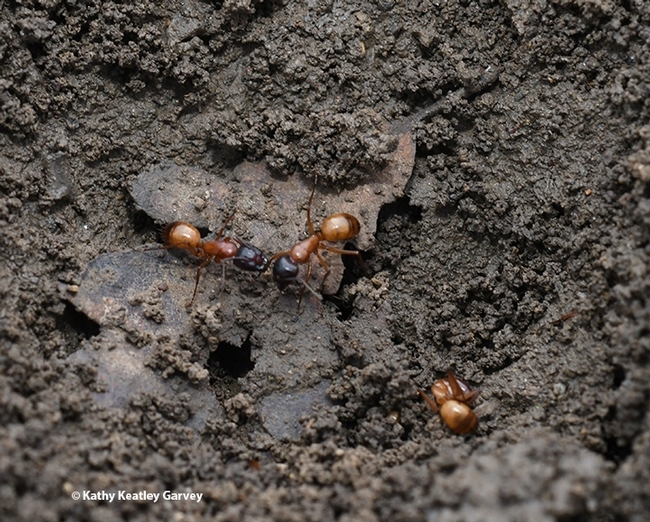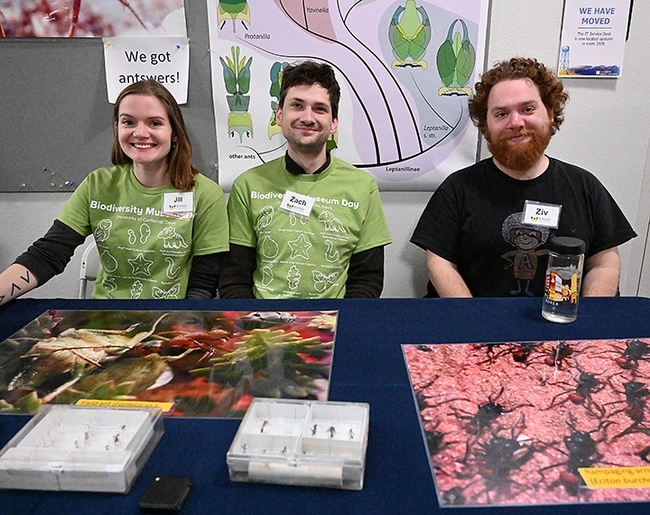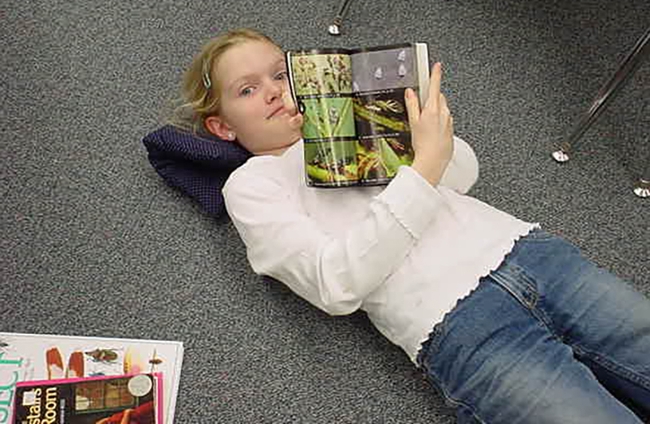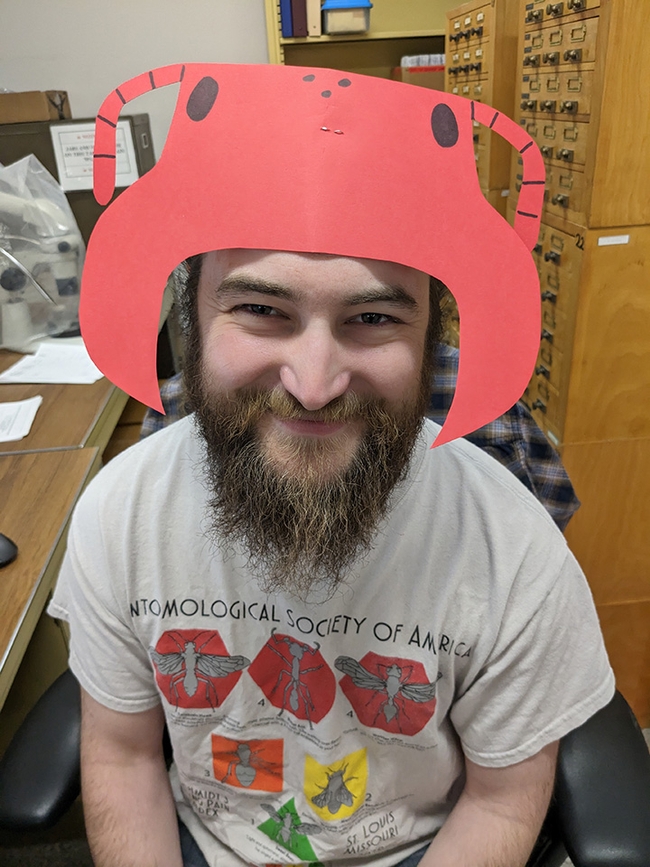- Author: Kathy Keatley Garvey
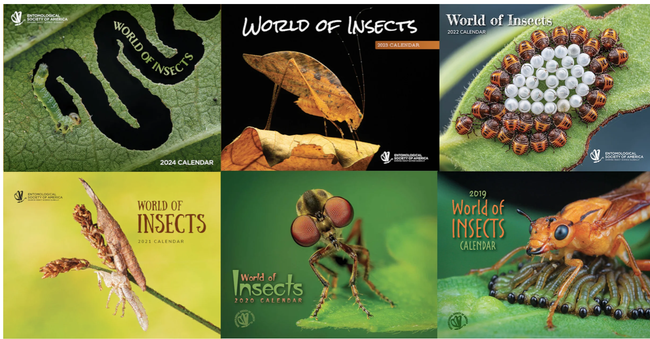
You'll see insects you've never seen before--and learn a little about them.
The cover image of the larva of the elm zigzag sawfly, Aproceros leucopoda (order Hymenoptera, family Argidae), native to Asia, is especially spectacular. It's the work of Christian Brockes of Germany.
"The elm zigzag sawfly is an east-Asian pest of elms (Ulmus spp), invasive in Europe since about 10 years ago and now also established in some North American regions," the ESA text relates. "The common name was inspired by the very distinctive patterns that their larvae leave on elm trees, while feeding. In large numbers, this species can critically damage elm populations. Often dozens of the tiny larvae--each only a few millimeters long--can be found on a single leaf, which they can skeletonize in a short period of time."
Scientists first detected this pest in the United States (Virginia) in 2021. Since 2022, it's been confirmed in four other states: Pennsylvania, North Carolina, Maryland and New York, according to research published in July 2023 in the Journal of Integrated Pest Management. The elm zigzag sawfly feeds exclusively on elms (Ulmus spp). It draws its name from the zizag-shaped pattern on the leaves as the larvae feed.
ESA prides itself on publishing world-class photography. Among the eight judges this year: Alex Wild, curator of entomology at the University of Texas and a doctoral alumnus from UC Davis. Wild studied with ant specialist Phil Ward, professor of entomology, UC Davis Department of Entomology and Nematology.
ESA issues a call for photos every January, and publishes the calendar every November. Of added interest, unselected images may appear on social media in the ESA's weekly "Arthropod Photo of the Week." Follow "Arthropod Photo of the Week" via the #arthropodPOTW hashtag on Twitter, Facebook, Instagram, and Mastodon.
We remember that an image of a hoverfly by UC Davis alumnus Alexander Nguyen appeared in the 2018 World of Insects Calendar. (See UC Davis of Entomology and Nematology website.) Judges chose his photo as one of the 12 winning images from a field of 560 entries submitted by 133 photographers from multiple continents. Nguyen captured the image at the UC Davis Stebbens Cold Canyon Reserve in April 2017, using his Canon 7D camera and a MPE 65-mm lens. Senior insect biosystematist Martin Hauser of the California Department of Food and Agriculture identified the hover fly as a male Platycheirus trichopus (Thomson, 1869).
What images are in the 2024 calendar? You'll see an ant tending treehopper nymphs, a chalcid wasp on Hemipteran eggs, stingless bees, a sunburst diving beetle, a Baltimore checkerspot butterfly, a Corsican owlfly, an ant-mimicking crab spider, a giant silk moth, an ambush bug preying on a bumble bee, a chestnut weevil, a poplar sphinx moth and an East Asian red damselfly. In addition, images that won honorable mentions share space on the calendar.
You can order the calendar here.
The 7000-member ESA, founded in 1889 and located in Annapolis, Md., is the world's largest entomological organization. It is affiliated with educational institutions, health agencies, private industry and government. Members are researchers, teachers, extension service personnel, administrators, marketing representatives, research technicians, consultants, students, pest management professionals, and hobbyists.
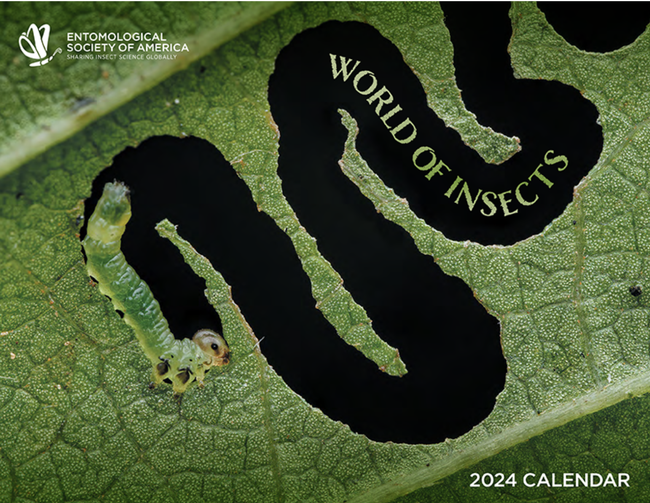
- Author: Kathy Keatley Garvey
Jill Oberski is in the third grade, stretched out on the classroom floor reading her "Audubon Field Guide to Insects and Spiders of North America." Another insect publication is within reach.
Fast forward to today: she's Dr. Jill Oberski.
She just completed her doctoral dissertation, studying with major professor Phil Ward, ant specialist and professor, UC Davis Department of Entomology and Nematology. She will present her exit seminar on "Phylogenetics and Biogeography of the Pyramid Ants" at 4:10 p.m., Wednesday, June 7 in 122 Briggs Hall The seminar also will be on Zoom.
"I've been fascinated by insects as long as I can remember," Jill said. "As a kid, I learned the names of the major taxonomic orders and created a small pinned collection, but I didn't realize it could be anything more than a hobby, so I shifted my sights toward becoming a medical doctor. But when I went to college, I met a professor who actually does study biodiversity and discover new arthropod species for a living. So after getting my start in research at Macalester College, and a year as an intern at University of Wisconsin-Madison, I started searching for suitable research programs across the country where I could train as a grad student doing those same things—biodiversity, evolution, and biogeography of insects or arachnids."
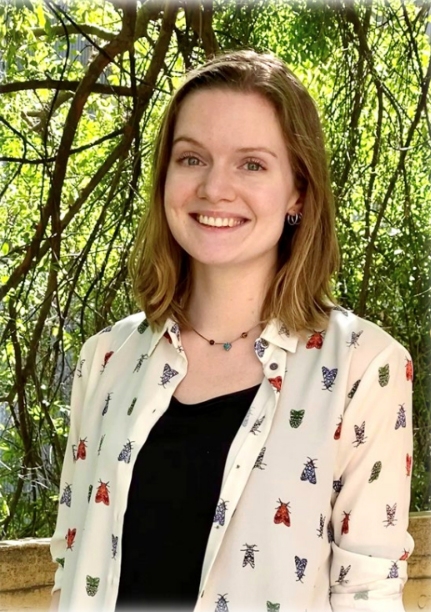
So, on June 7, she'll discuss her five-year research. "Ants of the genus Dorymyrmex, the 'pyramid ants,' exhibit an intriguing distribution that is most concentrated not near the equator, but instead in dry temperate regions of the Americas, such as deserts, shrublands, and beaches, and including Davis, California," Oberski writes in her abstract. "Although these ants are common, widespread, and ecologically significant, their diversity and evolutionary history are still poorly understood. My dissertation research introduces Dorymyrmex to modern phylogenomics and concerted biogeographic study by integrating classic and cutting-edge approaches: I performed targeted genomics with UCEs, inferred Bayesian phylogenies and fossil-calibrated divergence dates, and also employed traditional methods like morphometrics and visual species description."
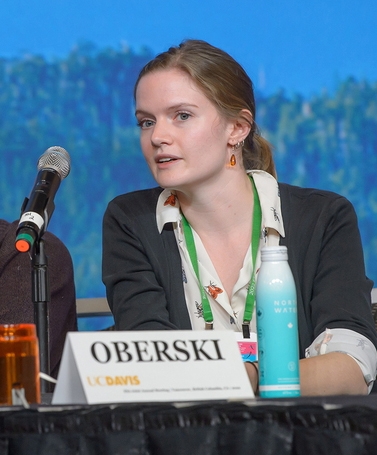
Jill, who joined the Ward lab in 2017, received a bachelor's degree in biology and a bachelor's degree in German studies, sum laude, from Malacaster College, Saint Paul, Minn. Fluent in German, she completed a 2014 summer course, "Anatomie, Physiologie, und Evolution der Tiere" (Anatomy, Physiology, and Evolution of the Animals) at Universität Wien, Vienna, Austria.
Since enrolling in the UC Davis graduate program, Jill has been more active than the ants she studies! She's a past president of the UC Davis Entomology Graduate Student Association, and served in leadership roles in the Girls' Outdoor Adventure in Leadership and Science (GOALS).
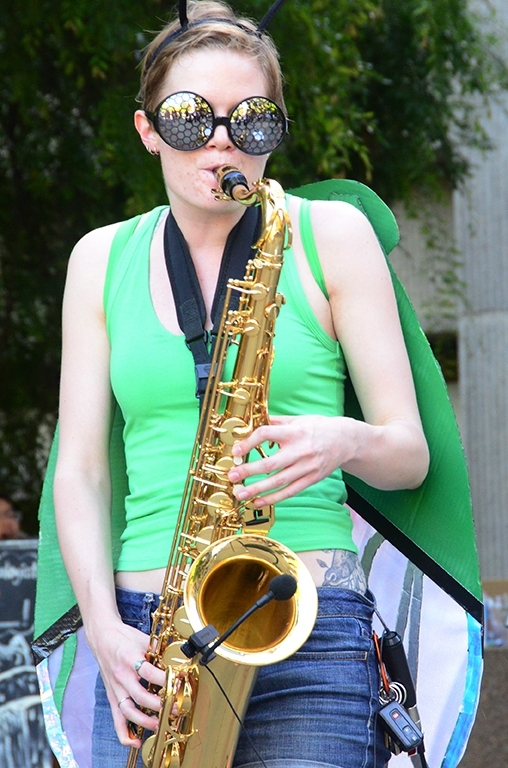
She received a five-year Dean's Distinguished Graduate Fellowship award in 2017. In May of 2022, she was selected for a Professors for the Future Fellowship (PFTF) award, described by PFTF as "a year-long competitive fellowship program designed to recognize and develop the leadership skills of outstanding graduate students and postdoctoral scholars who have demonstrated their commitment to professionalism, integrity, and academic service. The program is designed to prepare UC Davis doctoral students and postdoctoral scholars for an increasingly competitive marketplace and a rapidly changing university environment." For her project, she recorded a series of interviews about mental and chronic illnesses and how they impact academic professional development.
Jill, who plays tenor saxophone at community events, performed in an entomology band at the 2018 UC Davis Picnic Day as Jill “Jillus Saximus” Oberski. She dressed as a “generalized heteropteran,” which she described as “most likely a member of the family Acanthosomatidae (shield bug) or Pentatomidae (stink bug). My family and friends have called me Jillybug, so I came to be the band's representative of Hemiptera.” (See news story on Entomology website, and feature in Entomology Today, published by ESA)
Future plans? After receiving her doctorate June 15 at a UC Davis ceremony, Dr. Jill will be moving to Washington, D.C. this summer for a brief stint as a visiting researcher at the Smithsonian Museum of Natural History. Then, in January 2024, she will start a three-year independent postdoctoral research position in Frankfurt, Germany.
The Oberski seminar is the last of the spring seminars, all coordinated by urban landscape entomologist Emily Meineke, assistant professor. A pre-seminar coffee will take place from 3:30 to 4:10 p.m. in 158 Briggs. For technical issues regarding Zoom connections, she may be reached at ekmeineke@ucdavis.edu.
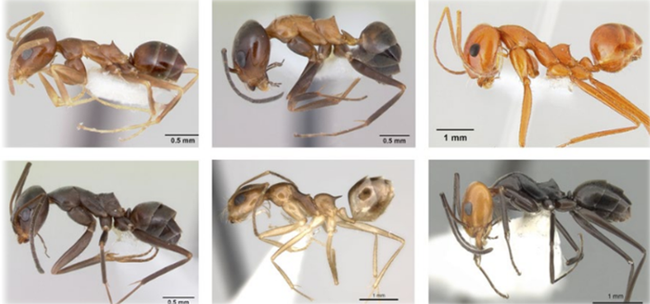
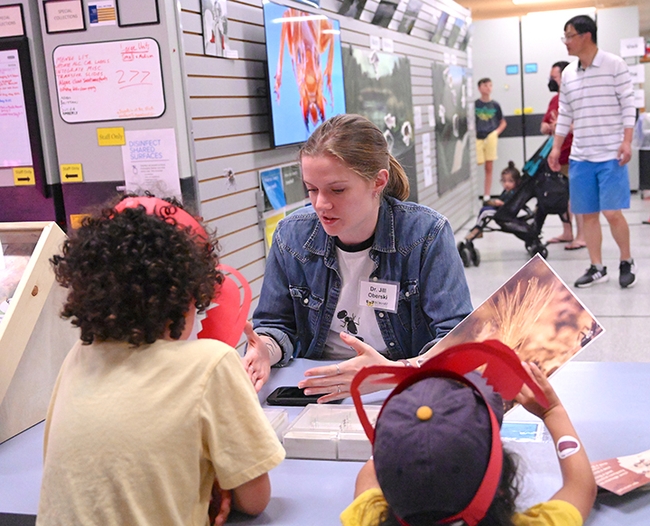
- Author: Kathy Keatley Garvey
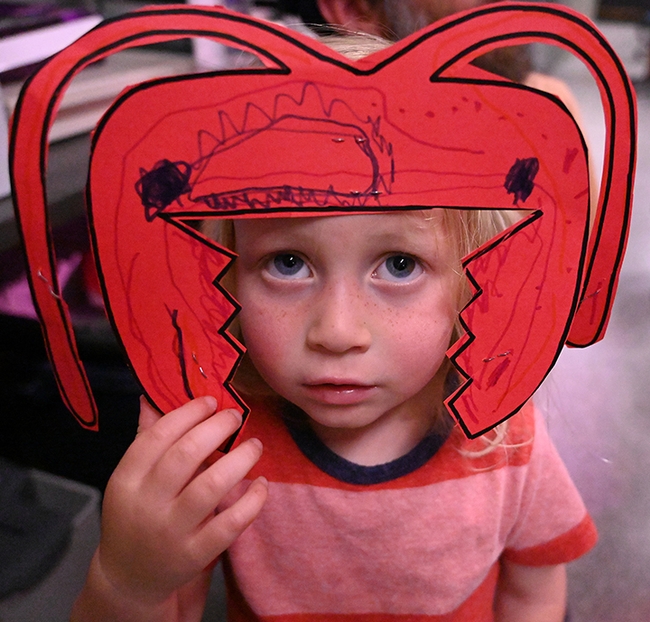
They really weren't red ants, but children wearing ant headgear, created during the family arts-and-crafts activity at the Bohart Museum of Entomology's open house on ants. The Phil Ward lab, UC Davis Department of Entomology and Nematology, organized and presented the open house.
The ant headgear was the brainchild of Tabatha Yang, education and outreach coordinator, and student intern Jakob Jess of MET Sacramento High School. He completed his two-year internship at the Bohart Museum this week, and starting this fall, will begin his studies at UC Berkeley.
"This was an art project inspired by leafcutter ants," Yang said, "and was meant to be both whimsical and colorful, thus the bright red. We had a template for folks to use, but they could also create their own from looking at the ant illustrations."
Myrmecologist Eli Sarnat, who received his doctorate at UC Davis, studying with Professor Ward, brought his sons, Benjamin, 7 and Evan, 3 to the event. They delighted in creating the ant headgear and checking out the ant displays.
UC Davis senior entomology major Morgan Myhre helped her children, Galileo, 5, and Esmeralda, 2, with their creations.
First-year entomology major Kat Taylor staffed the arts-and-crafts table, assisting the youngsters with their ideas. She also stapled the finished projects.
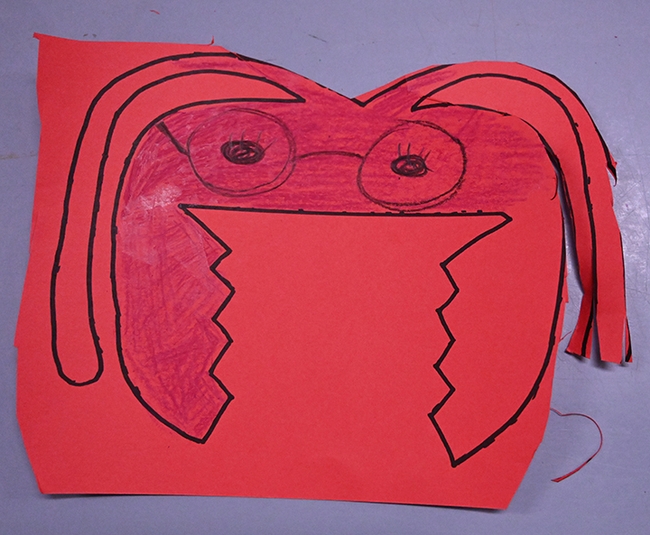
"The questions were mostly about the habits and behavior of ants, how many species are there, etc.," Ward related. "And how can I obtain live colonies for my kid? I received almost no queries about 'how do I get rid of them in my kitchen?' and that was refreshing."
"We had live colonies of a centipede-hunting ant (Stigmatomma oregonense) and a generalist omnivore (Aphaenogaster occidentalis)," Ward said. "The displays also included collections of common California ants; the world's smallest ant (Carebara) and the world's largest ant (Myrmecia)."
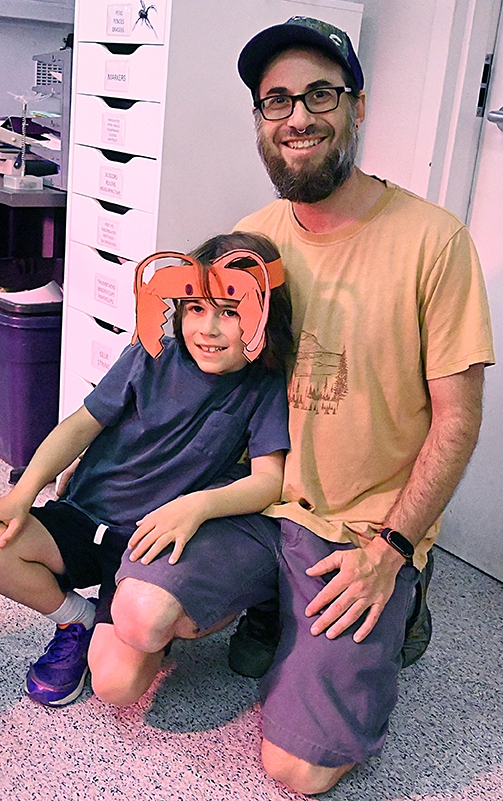
Oberski, who received her bachelor's degree in biology and a bachelor's degree in German studies (summa cum laude) in 2016 from Macalester College, Saint Paul, Minn., finished her dissertation earlier this month. She will present her exit seminar on "Phylogenetics and Biography of Pyramid Ants" at 4:10 p.m., Wednesday, June 7 in 122 Briggs Hall. It also will be on Zoom.
Oberski fielded such questions as "What do ants eat?" and "Are ants specialized or generalized in their feeding habits?" The answer can vary a lot, Oberski told them. "Some ants are generalists that eat any food they come across, but others are extremely specific, like ants that are fungus farmers or specialized predators of springtails, spider eggs, or centipedes."
Professor Ward and ants are showcased in a Bohart Museum of Entomology video on YouTube, https://youtu.be/d8eRNsD8dxo. Ants, he related, originated about 120 million years ago (early Cretaceous), evolving from "wasp-like creatures."
Next Open House on June 3. The next open house at the Bohart Museum is themed "Insects and Forensics," and will feature forensic entomologist Robert "Bob" Kimsey of the UC Davis Department of Entomology and Nematology. Free and family friendly, the open house will take place from 1 to 4 p.m., Saturday, June 3 in Room 1124 of the Academic Surge Building, 455 Crocker Lane. The arts-and-crafts activity will be "maggot-inspired art," Yang announced.
The Bohart Museum, directed by UC Davis distinguished professor Lynn Kimsey, houses a global collection of eight million insect specimens. It also maintains a live "petting zoo," complete with Madagascar hissing cockroaches, stick insects, and tarantulas, among others; and an insect-themed gift shop, stocked with books, posters, jewelry, pens, T-shirts, hoodies, and collecting equipment.
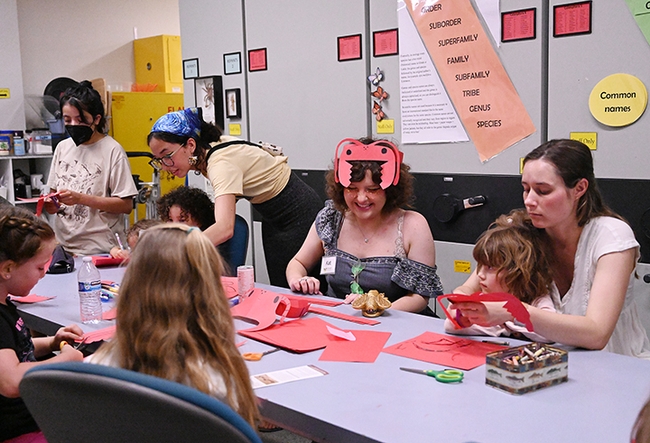
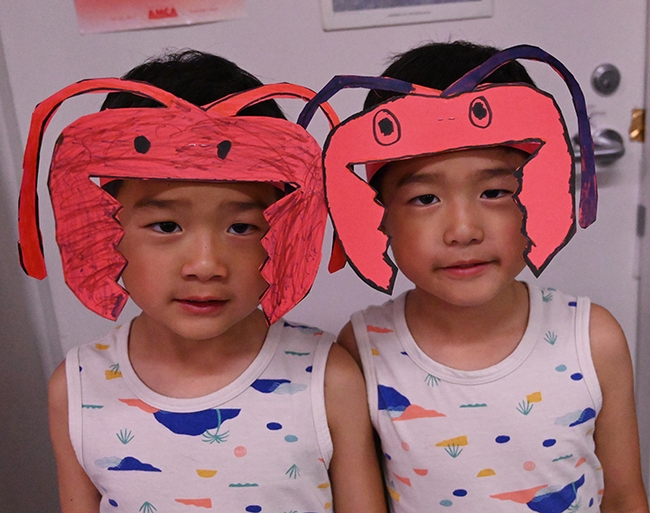
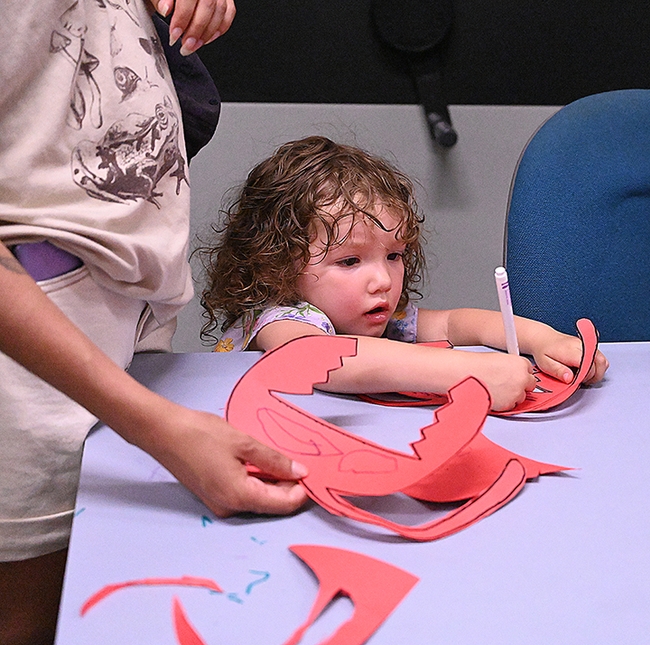
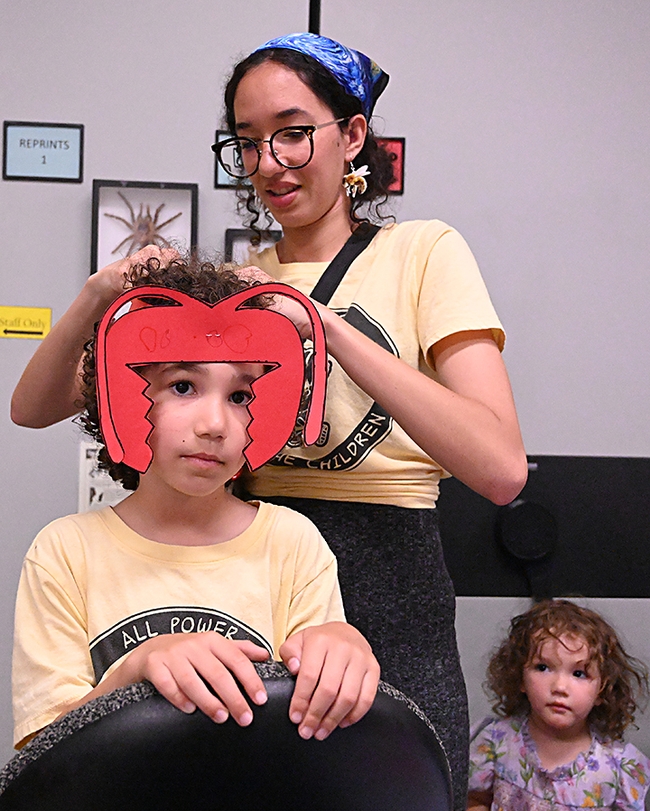
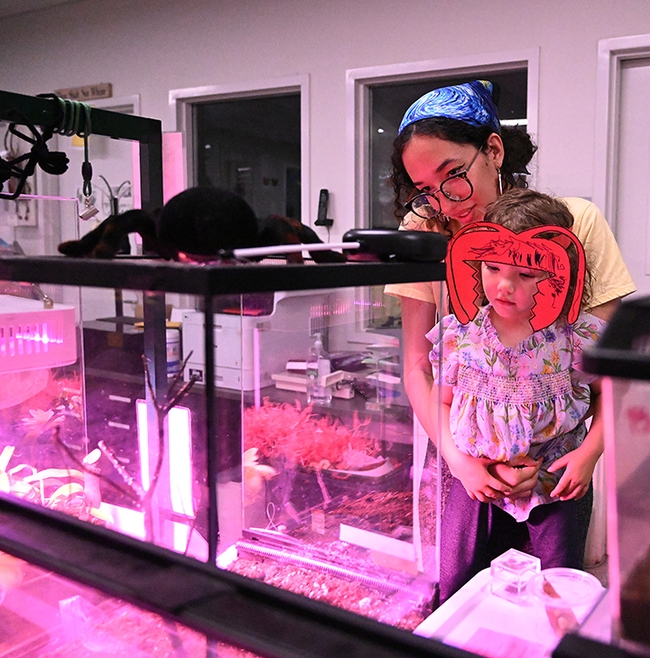
- Author: Kathy Keatley Garvey
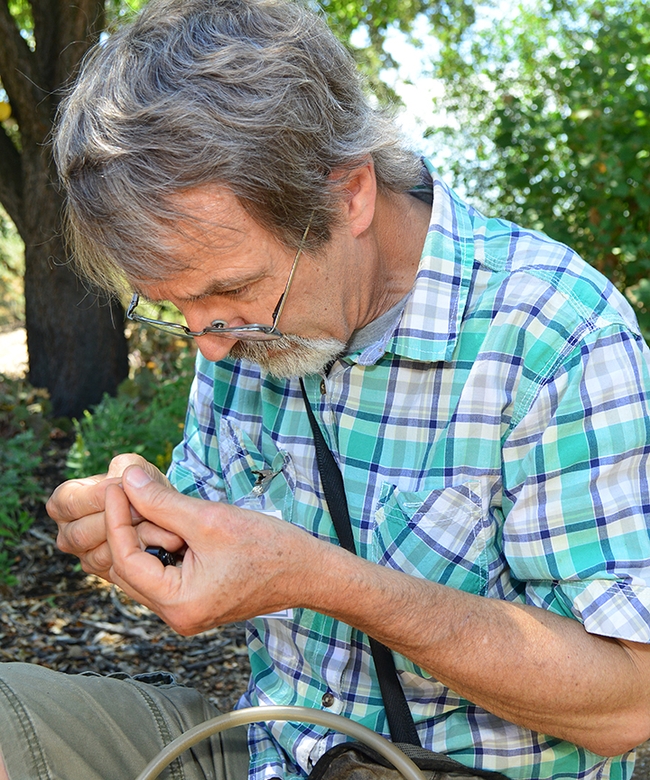
Or come for the hissers, stay for the ants.
Either way, it's all good.
When the Bohart Museum of Entomology hosts an open house on Sunday, May 21 from 1 to 4 p.m., ants will be the main attraction, but don't forget the critters in the live "petting zoo."
The Phil Ward lab, UC Davis Department of Entomology and Nematology, will provide live ants and specimens, and answer questions, one on one.
The open house, free and family friendly, takes place in Room 1124 of the Academic Surge Building, 455 Crocker Lane, UC Davis campus.
At the petting zoo, you can meet Princess Herbert, Coco McFluffin, Peaches and Beatrice and more.
Those are just a few of the tenants, says research associate Brittany Kohler, the zookeeper. Here are some of the critters:
Walking Sticks (5 species):
- Great thin stick insects (Ramulus nematodes), native to Malaysia, dimorphic (blue males)
- Borneo thorny stick insect (Aretaon asperrimus), native to Borneo
- Vietnamese stick insect (Medauroidea extradentata), native to Vietnam
- Golden-eyed stick insect (Peruphasma schultei) native to Peru/Ecuador
- Australian Leaf insect (Extatosoma tiaratum), native to Northern forests of Australia
Tarantulas/Spiders (6 species):
- Princess Herbert, the Brazilian salmon-pink bird-eating tarantula (Lasiodora parahybana). She is estimated to be around 20 years old, the oldest current resident of the Bohart Museum
- Peaches, the Chilean rose hair tarantula (Grammostola rosea)
- Coco McFluffin, the Chaco golden knee tarantula (Grammostola pulchripes), native to Paraguay and Argentina
- Two black widows (Latrodectus hesperus)
- One brown widow (Latrodectus geometricus)
Cockroaches (2 species):
- Madagascar hissing cockroaches (Gromphadorhina sp.)
- Giant Cave cockroach (Blaberus giganteus)
Centipede:
- Beatrice the Vietnamese centipede (Scolopendra subspinipes), the newest resident
Also:
- Ironclad beetles
- Bark scorpion
The Bohart Museum, directed by UC Davis distinguished professor Lynn Kimsey, houses a global collection of eight million insect specimens, plus the petting zoo and a gift shop stocked with insect-themed books, posters, jewelry, t-shirts, hoodies and more. Founded in 1946 and committed to "understanding, documenting and communicating terrestrial arthropod diversity," the Bohart Museum is named for UC Davis professor and noted entomologist Richard Bohart. The insect museum is open to the public Mondays through Thursdays, from 8 a.m. to noon, and 1 to 5 p.m.
More information is available on the Bohart website at https://bohart.ucdavis.edu or by emailing bmuseum@ucdavis.edu.
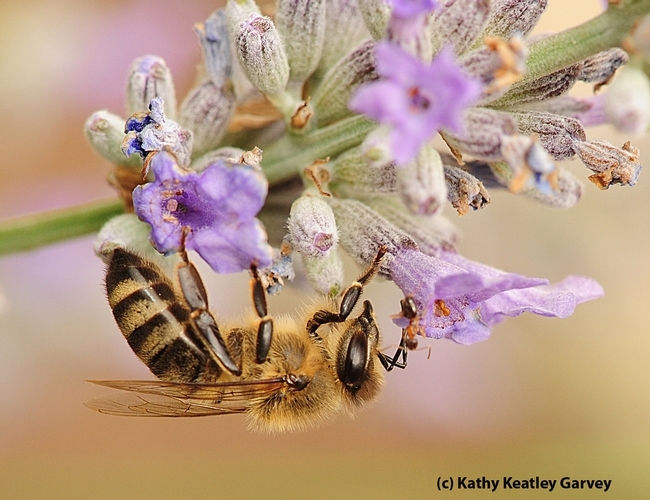
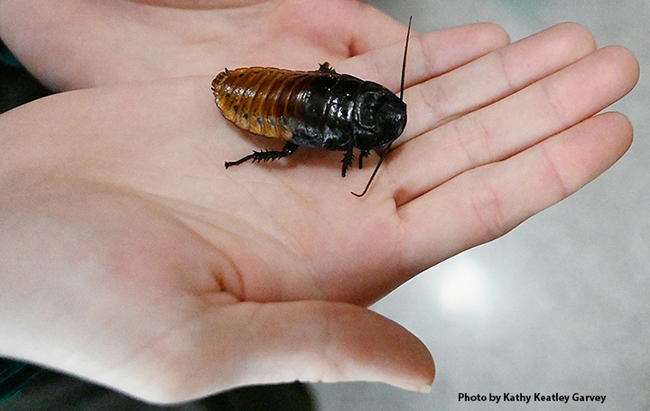
- Author: Kathy Keatley Garvey
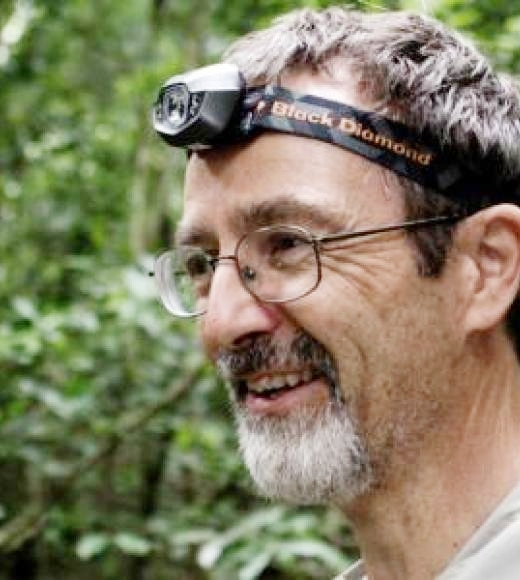
Right.
They belong to the same order, Hymenoptera, but some folks insist that ants don't belong in your life.
Oh, but they do!
Find out why at the Bohart Museum of Entomology open house from 1 to 4 p.m., Sunday, May 21. The event, spotlighting ants, is free and family friendly. It will take place in Room 1124 of the Academic Surge Building, 455 Crocker Lane.
Members of the Phil Ward lab, UC Davis Department of Entomology and Nematology, will answer your questions, show live ants and specimens, and engage in one-on-one discussions.
In a video released by the Bohart Museum of Entomology during a campuswide Biodiversity Museum Day, Professor Ward related: "Ants have occupied almost all of the world's land surfaces, from deserts to rain forests. There's a few places they're absent. They're not in Antarctica, no surprise! They haven't colonized the Arctic and a few very high elevation tropical mountains, but apart from that, almost any place you go on land you'll see our friends, the ants. And they have assumed a quite a diverse array of ecological roles. Some of them are predators, others are scavengers, and some are seed collectors, and these habits vary tremendously among different species in different parts of the world."
Among the Ward lab personnel scheduled to participate are doctoral candidates Jill Oberski and Zach Griebenow (both are expected to receive their PhDs this year), and third-year doctoral student Ziv Lieberman. Griebenow and Oberski are veterans of UC Davis teams that won national championships in the Entomological Society of America's Entomology Games or "Bug Bowls." (See news story) UC Davis teams won national championships in 2022, 2018, 2016 and 2015.
Meanwhile, be sure to watch what Professor Ward says in the video posted on YouTube at https://youtu.be/d8eRNsD8dxo. He illustrated his talk with ant images taken by his former doctoral student Alex Wild (PhD from UC Davis in 2005), curator of entomology at the University of Texas, Austin, and a noted macro photographer, (http://www.alexanderwild.com).
How ancient are ants? Ants originated about 120 million years ago (early Cretaceous), evolving from "wasp-like creatures," Ward said. They are members of the order Hymenoptera, and their closest relatives include honey bees, cockroach wasp and the mud daubers.
How many species in California? California is home to some 300 species of ants, but thousands more live in the tropics. Globally, there may be as many as 40,000 to 50,000 species of ants, the professor estimated, but only about 14,000 are described.
How do they communicate? Ants communicate largely by chemical (pheromones) and tactile means, Ward said. Their vision is "not particularly acute." He pointed out that that they lay a trail pheromones from the source of food back to the nest. They have alarm pheromones, causing other workers to act defensively. Chemicals also help ants distinguish their nest mates.
What about those Argentine ants? Some ants, like the Argentine ants, are pests. These invaders from South America "form super colonies, which means different colonies don't fight each other; they're all cooperating. And the other downside of Argentine ants is that they tend to eliminate native ants. So over the years I've lived in Davis, I have certainly noticed that native ants have declined as the Argentine ants have expanded. And they expand not just in, say, urban areas, but along certain natural habitats and one that they really like is the riparian habitat. So if you look along rivers and streams that are near urban areas, they're getting invaded by Argentine ants. And when they do, most native ants just disappear. This is a very tough aggressive ant and the mellow California ants can't handle an aggressive invader from South America. So they just disappear."
Ward related that ants live in long-lived colonies with (1) cooperative brood care (2) overlapping generations and (3) reproductive division of labor, the hallmarks of eusocial behavior. He also pointed out:
- A typical ant colony contains a reproductive queen, numerous non-reproductive workers and brood (eggs, larvae, pupae)
- Colonies of ants can be thought of as superorganisms: tightly integrated and cooperative entities with complex systems of communication and division of labor (castes)
The Bohart Museum's arts-and-crafts activity will be to create paper ant headbands. "The current version has serrated mandibles, but people can go free form, too," said Tabatha Yang, education and outreach coordinator. "We're hoping for a colony of visitors with red headbands."
The Bohart Museum, directed by UC Davis distinguished professor Lynn Kimsey, houses a global collection of eight million insect specimens, plus a petting zoo (including Madagascar hissing cockroaches, stick insects and tarantulas) and a gift shop, stocked with insect-themed t-shirts, hoodies, jewelry, posters, books, and collecting equipment.
Founded in 1946, the Bohart is open to the public Mondays through Thursdays, from 8 a.m. to noon, and 1 to 5 p.m. More information is available on the Bohart website at https://bohart.ucdavis.edu or by emailing bmuseum@ucdavis.edu.
